Exhibition
April 2018 - March 2019
-

Artists Seeking for Truth: Kishida Ryusei and Tsubaki Sadao2018.04.07(Sat)-2018.6.17(Sun)
Kishida Ryusei (1891-1929) was born in Ginza, Tokyo. While stimulated by Vincent van Gogh and other Post Impressionist artists, in due course, he created uniquely realistic works pursuing “inner beauty” such as those portraying his daughter Reiko. Tsubaki Sadao (1896-1957) was an artist who, throughout his lifetime, held Ryusei in high esteem. Born in Yonezawa, Yamagata, he was one of those that were strongly influenced by Ryusei. After Ryusei’s death, he restudied Japanese aesthetics and intently pursued his own painting. In this exhibition, by introducing these two artists’ achievements together, we hope each one’s individuality struggling within the atmosphere of the time, which might be described the youth of modern Japanese art, will come to light in context.
-
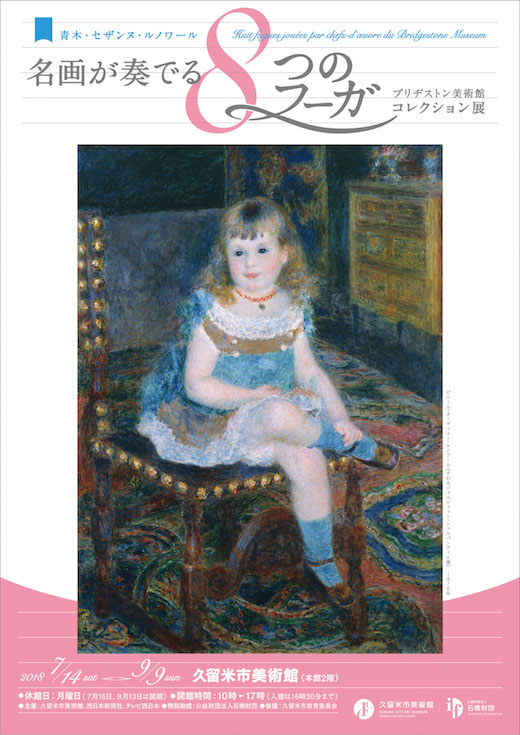
Eight Fugues Played by Masterpieces from the Bridgestone Museum of Art2018.07.14(Sat)-2018.09.09(Sun)
This exhibition is organized around eight representative works by eight artists from the Ishibashi Foundation Collection. Lined up in the galleries are approximately 100 works gently connected from one work to the next through “associations” concerning subject, color, or the relationship between the artists. The works are wide-ranging from Japanese paintings such as Paradise under the Sea by Aoki Shigeru and Reminiscence of the Tempyo Era by Fujishima Takeji to Western paintings such as Young Man Playing the Piano by Gustave Caillebotte, which is being shown in Kyushu for the first time. There are also works by the Impressionist artists Claude Monet and Pierre-Auguste Renoir and twenty-first century artists such as Zao Wou-Ki and Nomiyama Gyoji. Masterpieces connected beyond time and region harmonize while modulating.
Pierre-Auguste RENOIR, Mlle Georgette Charpentier Seated, 1876, Bridgestone Museum of Art -
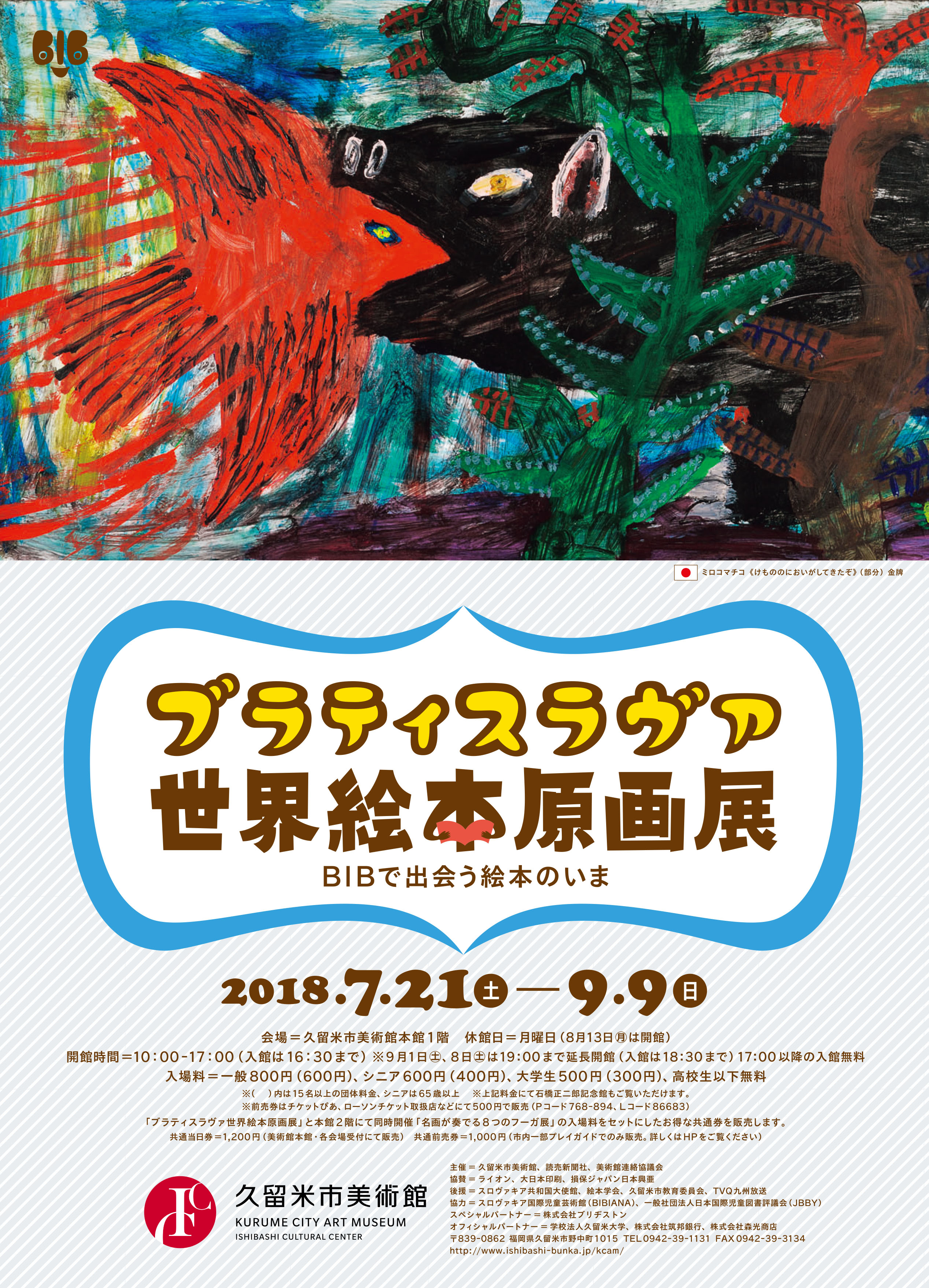
26th Biennial of Illustrations Bratislava in Japan-Encounter the Picture Book World of Today Through BIB2018.07.21(Sat)-2018.09.09(Sun)
- First Floor
The Biennial of Illustration Bratislava (BIB) is one of the world’s largest competitions of picture book illustrations held biennially in Bratislava, the capital of the Slovak Republic. It is known as an exhibition where highly artistic works and unique, experimental works are brought together. Many Japanese illustrators have been awarded in the past, including Dandelion by Arai Maki and Beasts Smelling by mirocomachiko at The 26th BIB held in 2017. This exhibition could be considered a Japanese version of The 26th BIB held in Bratislava, in which Japanese nominees, prizewinners, and other notable works will be introduced.
-
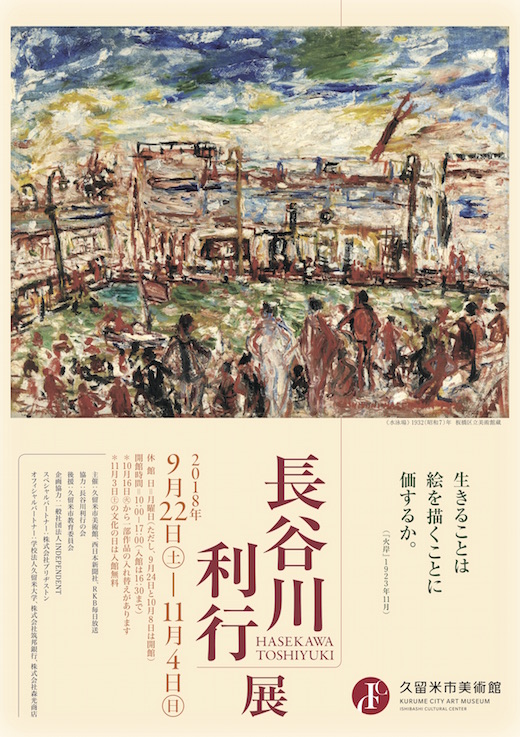
Hasekawa Toshiyuki Retrospective2018.09.22(Sat)-2018.11.04(Sun)
On account of his uninhibited brushwork and the dramatic life he led, Hasekawa Toshiyuki (1891-1940) is sometimes referred to as “Japan’s van Gogh.” Born in Kyoto, at around thirty years of age, he moved to Tokyo aspiring to become a painter. Winning the Chogyu Prize at the Nikaten in 1936, his talent as an artist came into bloom all at once. However, due to his innate tendency to wander, his life gradually came to a rupture. Having collapsed on the street, he was taken to a poorhouse and passed away without anyone at his deathbed.
Hasekawa Toshiyuki was an overly artist-like artist who lived to paint and painted to live. It is eighteen years since the last major retrospective of his works took place. A full view of this artist is presented through approximately 140 representative examples including newly discovered works.
-
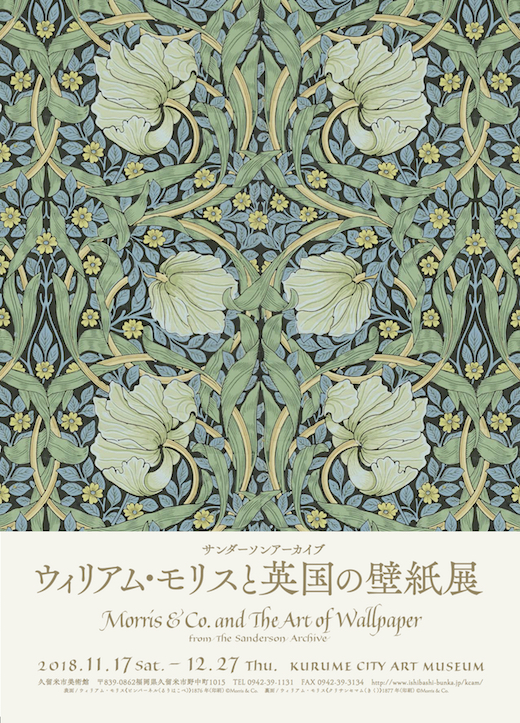
Morris & Co. and The Art of Wallpaper from The Sanderson Archive2018.11.17(Sat)-12.27(Thu)
Through wallpapers designed by William Morris (1834-1896), a British craftsman and pioneer of modern design, this exhibition traces the changes in wallpaper design, which flourished in Britain in the nineteenth century. In addition to the Morris-designed wallpapers, there are works predating those by Morris, woodblocks dating from Victorian times, and “kin-karakami,” Japanese wallpaper produced for export, which Morris was influenced by. It is the first time altogether 130 or so works owned by Sanderson, a leading British wallpaper company, are being shown collectively. The history from the founding of “Morris & Co.” to the “Arts and Crafts Movement” which followed, japonism in Britain, and a reconstruction of an interior of the time will convey the charms of the designs by Morris, who advocated “a beautiful life.”
William Morris, Pimpernel, 1876, The Sanderson Archive ©Morris & Co. -
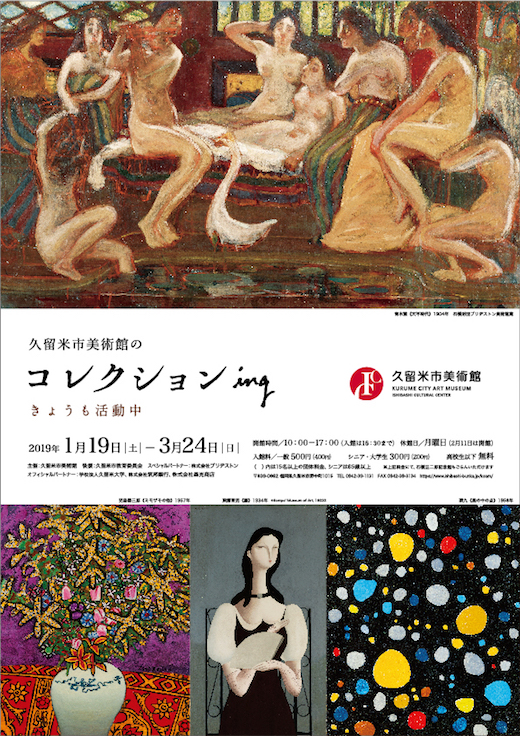
The Growing Collection of Kurume City Art Museum: Ongoing Activities2019.01.19(Sat)-03.24(Sun)
The Growing Collection of Kurume City Art Museum: Ongoing Activities
Kurume City Art Museum is continuing to collect works in order to build a comprehensive collection of Western-style paintings by artists from Kyushu. We have just renewed part of the altogether 200 works deposited with our Museum by the Ishibashi Foundation.
We chose “growing” in the present progressive form for the exhibition title to indicate that our collecting is ongoing. The second installment of this Growing Collection series introduces works from our own Collection which are being shown here for the first time and those on deposit. It also focuses on the Museum’s activities such as restoration and framing.
Through approximately 100 works from our further enriched Collection and works on deposit, we hope you will enjoy the “growing”which continues not only in quantity but also in the refinement of the quality of the works after they enter our Collection.
